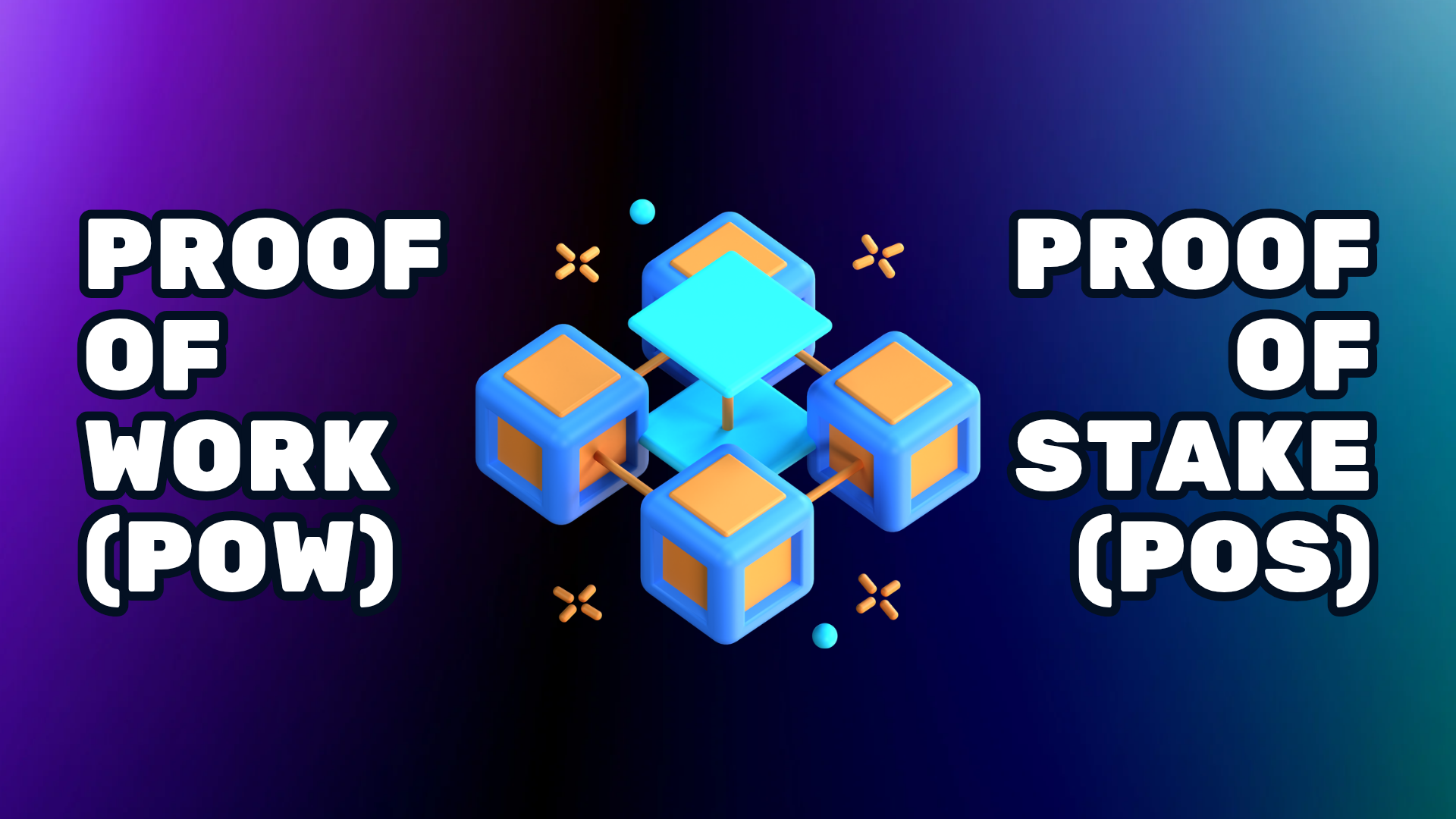Every blockchain network employs a specific consensus mechanism to validate transactions. These systems ensure that a decentralized network can agree on transaction legitimacy without central authority.
The two most well-known consensus mechanisms are Proof of Work (PoW) and Proof of Stake (PoS). While both serve the same purpose, they operate very differently. Let’s dive into how each one works and explore the key differences between them.
READ ALSO: Web3: The Decentralized Internet
What is Proof of Work (PoW)?
Proof of Work (PoW) is the mechanism used by Bitcoin and several other cryptocurrencies. In PoW, participants called miners use powerful computers to solve mathematical puzzles. The first miner to solve the puzzle gains the right to validate transactions and add a new block to the blockchain, receiving cryptocurrency as a reward for their efforts.
PoW requires significant computational power, leading to high energy consumption, as it relies on specialized mining hardware. While PoW is considered highly secure and has been tested over time, its environmental impact is a major concern due to the amount of energy consumed in the mining process.
What is Proof of Stake (PoS)?
Proof of Stake (PoS) operates differently from PoW. Instead of using miners to solve puzzles, PoS selects validators based on how much cryptocurrency they are willing to stake, or lock up, as collateral. The more cryptocurrency a person stakes, the greater the probability they will be chosen to validate transactions and add new blocks to the blockchain. Validators may also receive staking rewards for participating in the process.
PoS is much more energy-efficient compared to PoW because it eliminates the need for power-hungry mining software. However, critics argue that PoS could lead to centralization, since larger holdings increase chances for validators.
Difference between Proof of Work (PoW) and Proof of Stake (PoS)
The primary difference between PoW and PoS is energy consumption. PoW is notorious for its high energy usage due to the mining process, while PoS offers a more environmentally friendly solution by eliminating the need for mining equipment.
In terms of security, both systems are secure, but PoW has been tested and proven over time. PoS, while newer, offers significant scalability advantages. PoS can handle more transactions per second, making it a more efficient choice for blockchains looking to scale and support broader adoption.
Frequently Asked Questions (FAQ)
How Is a Transaction Verified on a Cryptocurrency Network?
PoW and PoS are two kinds of consensus mechanisms used by blockchains to verify transactions. In PoW systems, miners verify transactions. In PoS ones, validators do the job. Both methods ensure that transactions adhere to the blockchain’s rules before being added to the ledger.
How Does a Block of Data on a Blockchain Get Locked?
Once a block is validated (whether by PoW, PoS, or another consensus mechanism), it is added to the blockchain. Cryptographic techniques are then employed to secure the block, ensuring it cannot be altered and thereby preserving the integrity of the blockchain.
Are There Other Consensus Mechanisms Besides PoS and PoW?
While PoW and PoS are two of the most popular consensus mechanisms, they are not the only ones. There is also Proof of History (PoH) and Proof of Authority (PoA), among others.
SUGGESTED ARTICLE: Decentralized Autonomous Organizations (DAOs): Where Decentralization Meets Governance










